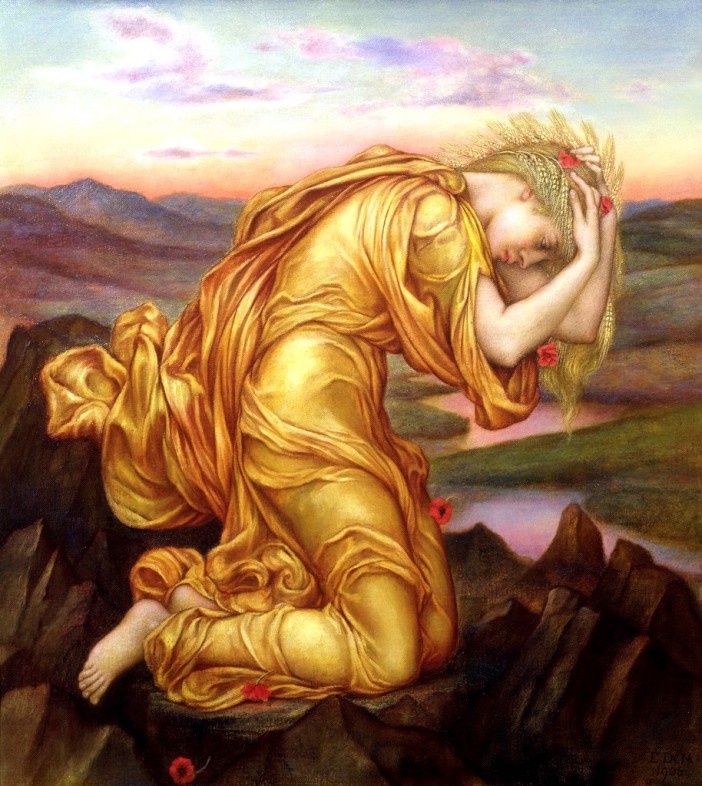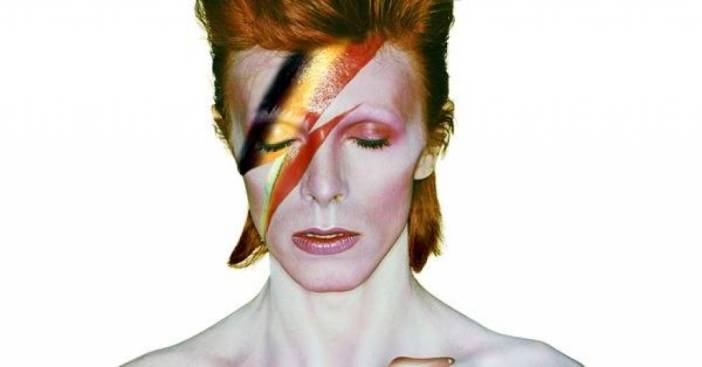
If you troll the internet for interpretations of the dwarf planet Ceres in astrology, you’ll mostly find the following themes represented:
- Nourishment, food, by extension maybe agriculture, cooking, herbalism and so on;
- Mothering and caretaking, unconditional love; and
- Over-mothering, empty nest syndrome, the inability to let go of the adult child or inability to allow a child’s independence
Well, I’ve got a bone to pick with some of that.
In the interest of full disclosure, I have to state for the record that a big part of my interest in astrology is its mythologyology. A natal chart interpretation is really our own personal mythology (so make sure you interpret yours well!). I often use mythology to circumscribe the potential interpretations of a planet. That is arguably rather arbitrary on my part. Astrological interpretation has changed a lot over the course of its history, as have the uses of astrology (e.g., from finding out what dates are unlucky to psychological/personality analysis), so of course the meanings ascribed to certain bodies are going to change too. We like to think those changes are based on actual results observed by astrologers, but if we’re honest it’s just as much due to cultural changes in semiotics. So it seems to me that myth, coupled with observation, is a good basis for interpretation.
In keeping with that, when it comes to interpreting these relatively recent additions to Western astrology, the dwarf planets and asteroids, which don’t have as much of a literature built up around them, I always look to the mythology. Below, I’m going to assume you already know the myth of Persephone’s abduction by Pluto/Hades and Demeter’s subsequent search for her.
Food and nourishment
I don’t have a quibble with this one–food (in particular, domesticated plant foods) were indeed the purview of Ceres. I think we can reasonably extend this into a more abstract symbolic domain and talk about nourishment generally, but we can’t overlook the element of husbandry here. Ceres is (mostly) not a goddess of wild plant life, but of the interdependent relationship between humans and plant foods. She’s also a goddess of staple foods–that is, in the civilizations of the Classical Mediterranean, cereals were a major, if not the major, component of the diet. So we’re not talking about something that’s just nice to have, but something that you’ll die without.
Mothering and caretaking
This gets into territory traditionally associated with the Moon in astrology, but it is certainly a big part of Ceres’ mythology. It speaks to that matter of husbandry I mentioned above and is of course part of the classic Mother Earth persona. Here is a rather good article on Ceres and what/how we cherish. The author suggests that Ceres has more to do with how we nourish (and cherish) than how we are nourished.
By combining the concept of Mother Earth with that of caretaking and food production, Ceres has also been associated with environmentalism. I’m not sure how well that pans out “in the field” (pun intended) in natal charts, but it seems like a reasonable elaboration at least for our times.
(S)mothering
This is the point that I have the biggest problem with–the idea that Ceres is a smothering mother. This seems to have grown out of a revisionist version of the myth in which Persephone wanted to go off and have sexy times with Uncle Pluto in his basement dungeon, or at least decided while being raped that she was really into it. Well, that’s all very modern and whatnot, but it’s not, so far as I have been able to learn, part of the original myth. Nor is there any implication in the myth that the bond of affection between Demeter/Ceres and Persephone is abnormally codependent or excessively clingy. The original mythology is very clear that Persephone is forcibly abducted and raped by Pluto. Yes, she subsequently reigns as queen of the Underworld during her annual winter sojourns there–but for me this is less about a good girl who likes bad boys and discovers a taste for incest and BDSM than it is about the personal empowerment of a trauma survivor. Yes, that’s a modern interpretation too, but it is better supported by the mythology. I’ll come back to that.
Bear in mind that Pluto was wearing a helmet that rendered him invisible at the time. There are Ceres and her daughter happily going about their business when suddenly the earth opens up and Persephone is just sucked down into it. I can only assume if that happened to my daughter I’d be pretty motivated to try to rescue her. So I view Ceres’ behavior after the abduction as that of a courageous mother rather than a smothering one.
I think the other thing one has to bear in mind here is that this actually happens to women. Actual living and breathing young human women are abducted, held captive, and sexually assaulted on a not-infrequent basis when you look at the phenomenon through history and globally (it being an especially common tactic during wartime–consider the Korean “comfort women” of WWII for just one example) and I don’t think very many of them say to themselves, gee, I really like being locked in this box and raped all the time, I sure hope my mom doesn’t try to find me and rescue me… Here is an article that looks at Ceres in the charts of women/girls who were abducted (and in some cases, literally held underground).
Every planet arguably has a dark side, and since Ceres is so strongly associated with the Mother Goddess persona, I guess it’s predictable that when casting around for the dark side some astrologers would land on the idea of over-mothering. But there is a “dark” side to Ceres that is all too often overlooked, to wit:
Feast and famine, death and rebirth
First of all I have to say that I’m not the first to point this out. I highly recommend Dawn Bodrogi’s post Ceres: The Dark Harvest (the title says Part 1, but as far as I’m aware there’s no Part 2; possibly it moved behind a paywall, i.e., became part of a course). She writes:
“People often talk about Ceres simply in terms of feeding, nurturing, caring, mothering. But Ceres reigns over much more, and she has her dark side, too. Sure, she walks around waving those stalks of wheat. But, um…what’s that there? I see poppies…blood red poppies. And what’s moving around under that wheat…a snake? The lesser known symbols of Ceres hold the key to understanding her….
“She oversaw, amongst other things:
“The physical journey from birth to death, and all its major rituals.
The female passage into maturity.
The balance of nature.
The feeding, nurturing and sustaining of life.
The seasons and cycles of life–natural order and balance.
The pleasure and satisfaction of the senses and appreciation for the physical world.
The giving and receiving of unconditional love.
The interplay of darkness and light….”
If we’re looking for Ceres’ dark sides, well, the obvious dark side of food is famine. As I said, she is associated with plant foods that are so essential to the diet we would (at least in the old days) die without them. In her search for Persephone, Demeter/Ceres allowed the crops to wither and thereby caused famine.
I mentioned the interdependent relationship of humans with our food plants. We now know that this extends beyond just the plants themselves to the micronutrients in the soil and mycorrhizal networks–both we and the plants are bound up in the entire food web. So Ceres makes us look at relationships of nourishment beyond just those of parent and child, to a network of interdependencies that would be very familiar to Buddhists (cf. Indra’s Net). Interdependence is not in itself good or bad, but can be either depending on the value judgments placed on it in context.
And finally, lest we forget, the Eleusinian mysteries that revolved around Demeter and Persephone were all about the promise of rebirth and eternal life. Here we return to Persephone as queen of the underworld. She isn’t queen by virtue of some domestically-abusive marriage to Pluto; rather she stands apart from him, a sort of parallel ruler. In Pluto’s underworld, there’s seldom any return possible; but the underworld of the Mysteries is not a permanent destination. Indeed, Persephone’s ascent out of the underworld and her reunion with her mother (and thus life, growth, and fertility, the return of spring) was the most important part of the Eleusinian Mysteries. In a sense, Persephone’s story is another variation on the theme of the underworld journey, albeit one that is not undertaken willingly.
So there’s a very strong case for reinstating the birth-death-rebirth cycle to the semiotic field of astrological Ceres. Bodrogi again:
“Ceres reveals herself very strongly in a study of secondary progressions. Ceres is often on an angle when a major life passage is at stake, a birth, a marriage, a death. She’s often prominent in divorce, or when natural disasters sweep homes away. Ceres is often featured in progressions when we lose the very thing we believe we need to live–a partner, professional status, financial security….Ceres is also there when we lose things through neglect and lack of respect.”
But I think it’s important to understand that ultimately, Ceres was primarily associated with forces of life rather than death. Obviously life and death are inextricably entwined, but Ceres is the life part of that relationship.
In chart interpretation there is the risk of turning Ceres into a mini-Moon, but instead it needs to be approached almost as a mirror of Pluto. I’m not entirely sure what that means in practice–I suspect few astrologers do know, since Ceres is a relatively new addition to tropical astrology and many more traditional astrologers don’t look at it at all. Intuitively I have the sense that whereas Pluto is about insight into and transformation of what one might call the soul-deep level, Ceres relates more to the earthly body. Also Ceres lies between Mars and Jupiter and thus can be considered more “personal” and less “generational” in its scope. So where Pluto acts like (and is likely to be experienced as) an impersonal force that “happens to you” and sweeps you along, Ceres reflects dynamics that you can identify with and recognize as a part of your inner life. Keywords I would associate with Ceres would be resurrection, fertility, abundance, protection, sustenance (and sustainability), husbandry (or midwifery); or, life and how to support it, nourish it, maintain it, and regenerate it. I would hypothesize that a prominent Ceres in a natal chart could function as a sort of resurrection engine or life support giving the individual an ability to rise from their own ashes and/or to act as a sort of rebirth-midwife to people and projects. In synastry I would expect to see the dynamics of care, protection, and nurturing love come out more.

